Слайд 2FUNERAL RITES AMONG THE KAZAKHS
The special abilities of the Kazakhs, such as
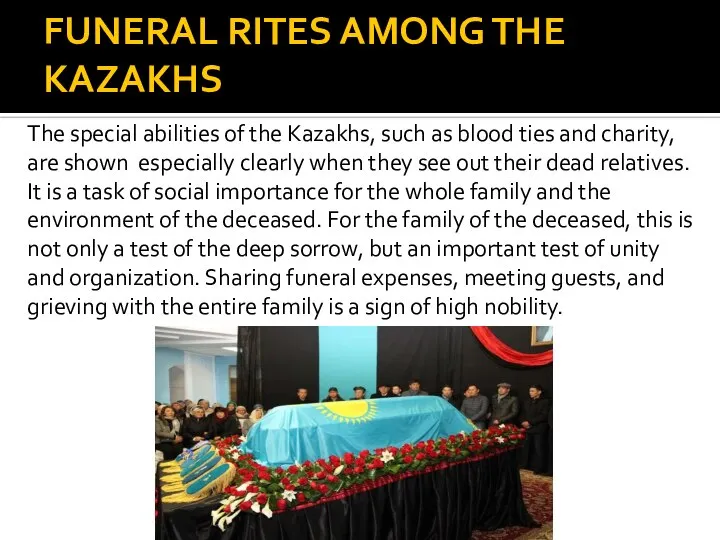
blood ties and charity, are shown especially clearly when they see out their dead relatives. It is a task of social importance for the whole family and the environment of the deceased. For the family of the deceased, this is not only a test of the deep sorrow, but an important test of unity and organization. Sharing funeral expenses, meeting guests, and grieving with the entire family is a sign of high nobility.
Слайд 3Close relatives of the deceased meet guests who have arrived to express
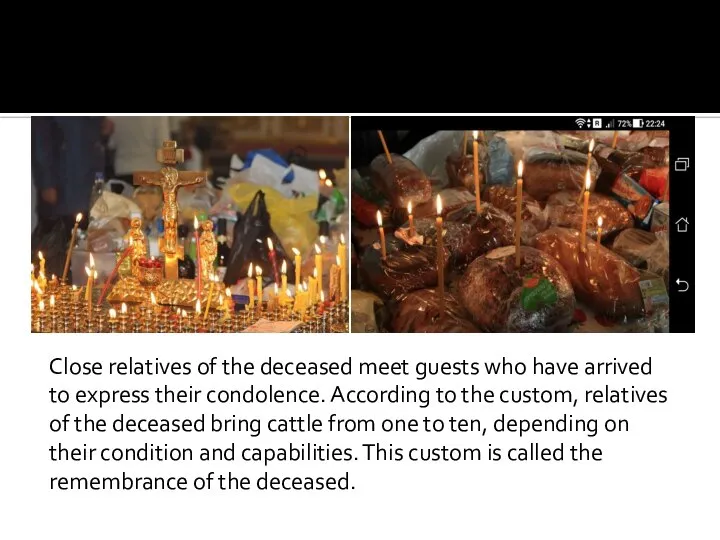
their condolence. According to the custom, relatives of the deceased bring cattle from one to ten, depending on their condition and capabilities. This custom is called the remembrance of the deceased.
Слайд 4The body of the deceased is in the house for several days,
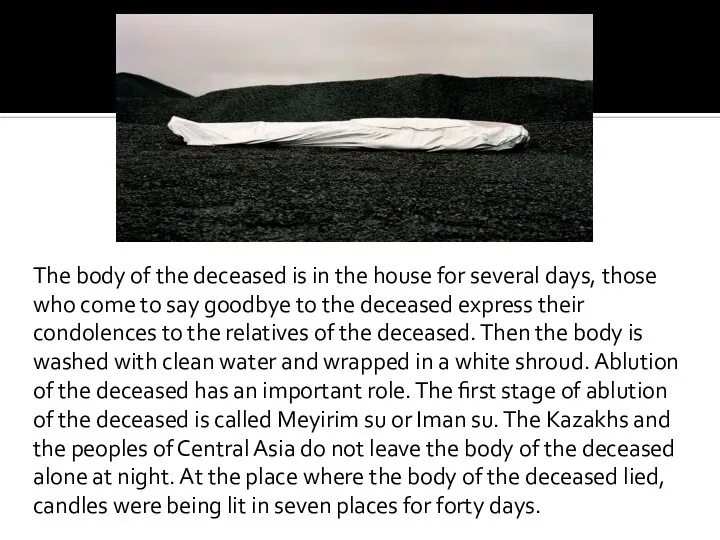
those who come to say goodbye to the deceased express their condolences to the relatives of the deceased. Then the body is washed with clean water and wrapped in a white shroud. Ablution of the deceased has an important role. The first stage of ablution of the deceased is called Meyirim su or Iman su. The Kazakhs and the peoples of Central Asia do not leave the body of the deceased alone at night. At the place where the body of the deceased lied, candles were being lit in seven places for forty days.
Слайд 5The second stage of preparation for burial is the preparation of the
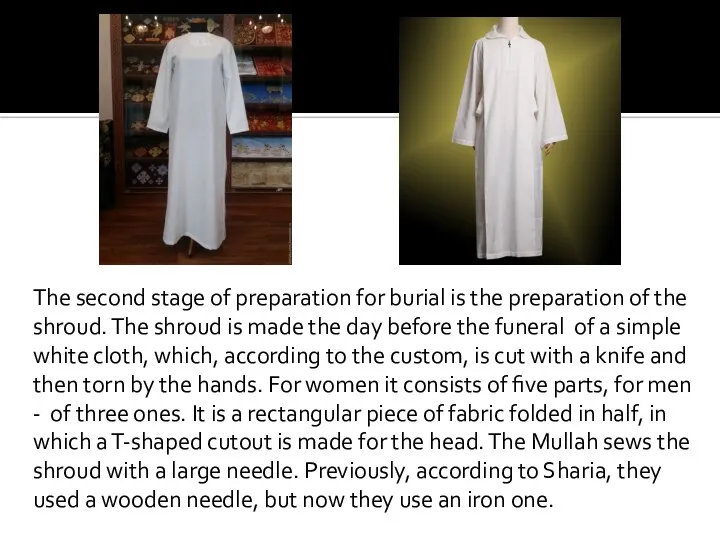
shroud. The shroud is made the day before the funeral of a simple white cloth, which, according to the custom, is cut with a knife and then torn by the hands. For women it consists of five parts, for men - of three ones. It is a rectangular piece of fabric folded in half, in which a T-shaped cutout is made for the head. The Mullah sews the shroud with a large needle. Previously, according to Sharia, they used a wooden needle, but now they use an iron one.
Слайд 6After the shroud is made, the second stage of ablution is performed.
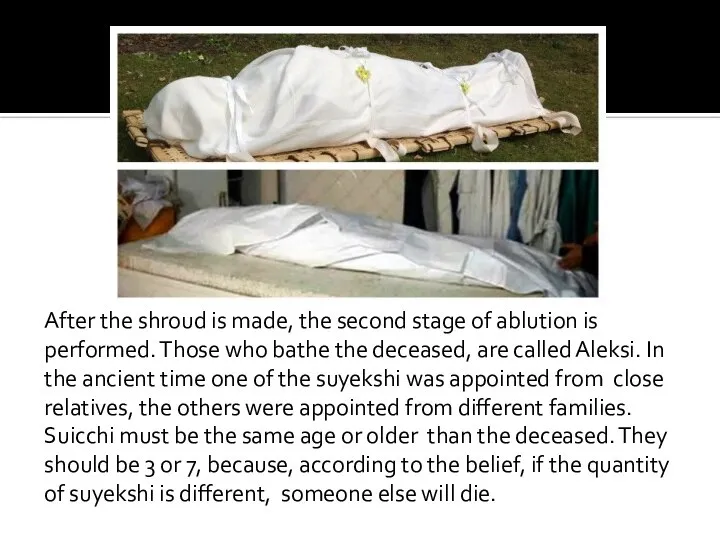
Those who bathe the deceased, are called Aleksi. In the ancient time one of the suyekshi was appointed from close relatives, the others were appointed from different families. Suicchi must be the same age or older than the deceased. They should be 3 or 7, because, according to the belief, if the quantity of suyekshi is different, someone else will die.
Слайд 7After the last ablution, the deceased is dressed in a shroud. Having

wrapped the deceased in a shroud, both ends – at the head and at the feet are tied with a narrow ribbon, in the belt – with a wide ribbon. The ribbons are also torn from the same cloth as the shroud. After that, the body of the deceased is wrapped in a cat. Then the rite of taking out evidence is performed. It is sometimes referred to as reading the proof, ysat. This ceremony takes place in the form of a special reading of the verses of the Koran. It is usually performed after the evening prayer, before the funeral.
Слайд 8Before the burial ceremony, the ceremony of distributing the deceased's things is
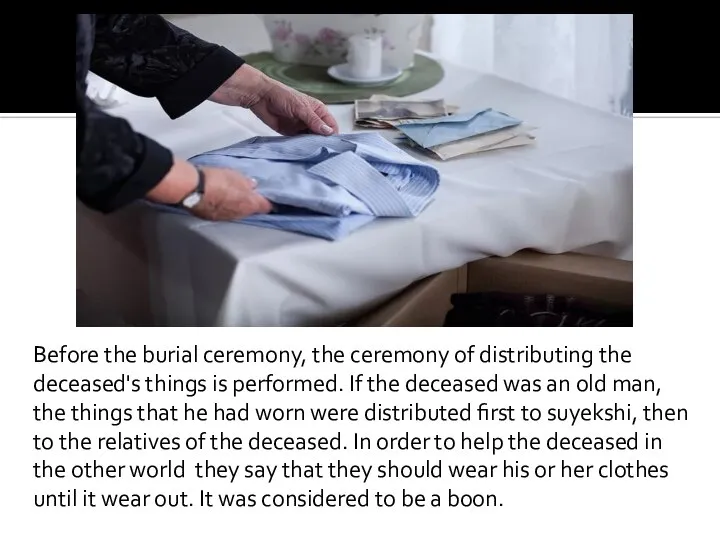
performed. If the deceased was an old man, the things that he had worn were distributed first to suyekshi, then to the relatives of the deceased. In order to help the deceased in the other world they say that they should wear his or her clothes until it wear out. It was considered to be a boon.
Слайд 9The dead man is carried out of the house head first. His
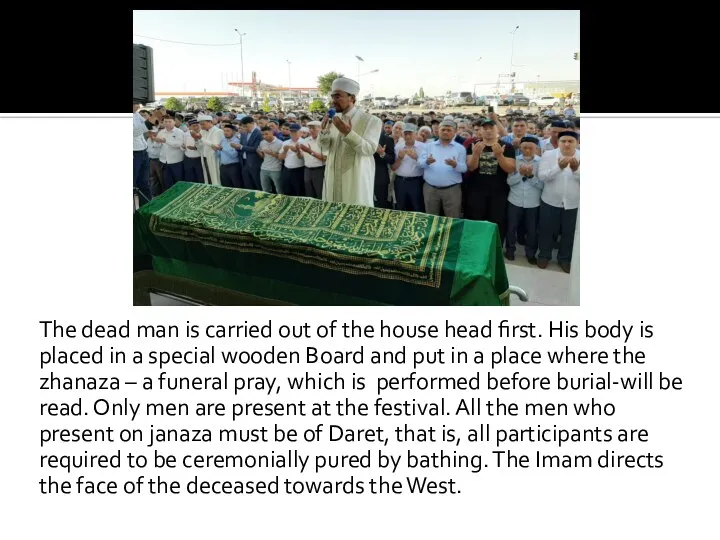
body is placed in a special wooden Board and put in a place where the zhanaza – a funeral pray, which is performed before burial-will be read. Only men are present at the festival. All the men who present on janaza must be of Daret, that is, all participants are required to be ceremonially pured by bathing. The Imam directs the face of the deceased towards the West.
Слайд 10After reading zhanaza, the audience is asked if the deceased was a

good man. Then the Imam asks if he has any debts left to anyone present and if anyone owes him. According to the custom, if someone claimed to have a debt, the relatives of the deceased had to immediately give the debt back. After the rite of zhanaza is time to sing Aktau – crying-song for the dead.
Слайд 11Then the body of the deceased is taken to the burial place.
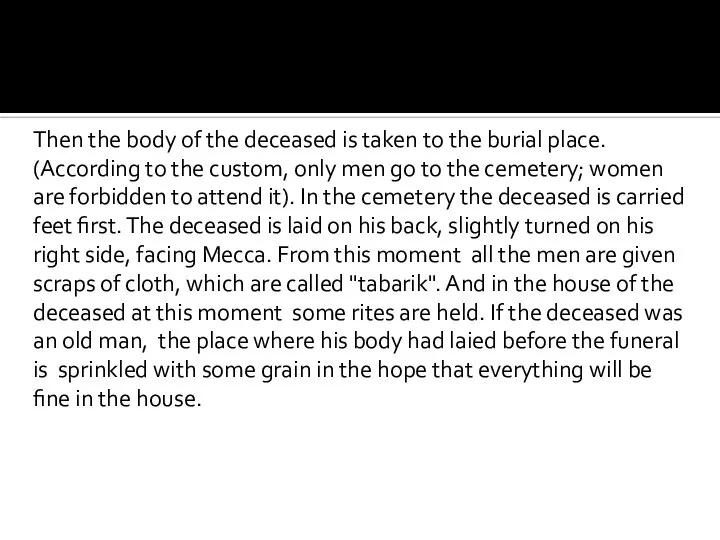
(According to the custom, only men go to the cemetery; women are forbidden to attend it). In the cemetery the deceased is carried feet first. The deceased is laid on his back, slightly turned on his right side, facing Mecca. From this moment all the men are given scraps of cloth, which are called "tabarik". And in the house of the deceased at this moment some rites are held. If the deceased was an old man, the place where his body had laied before the funeral is sprinkled with some grain in the hope that everything will be fine in the house.










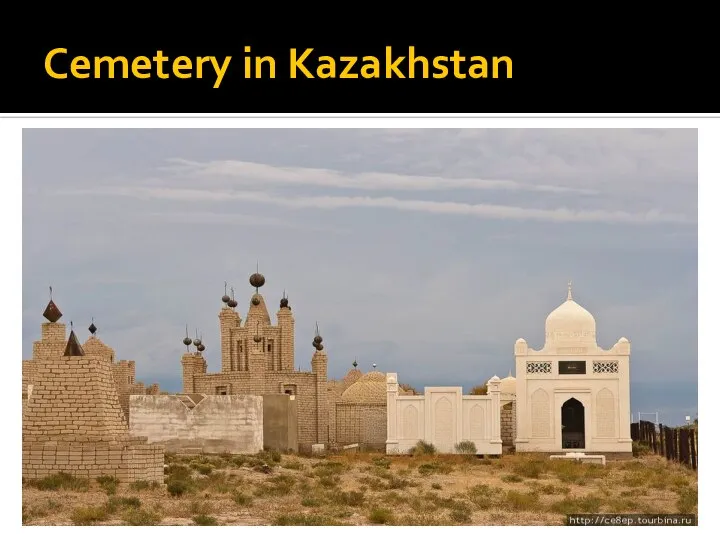
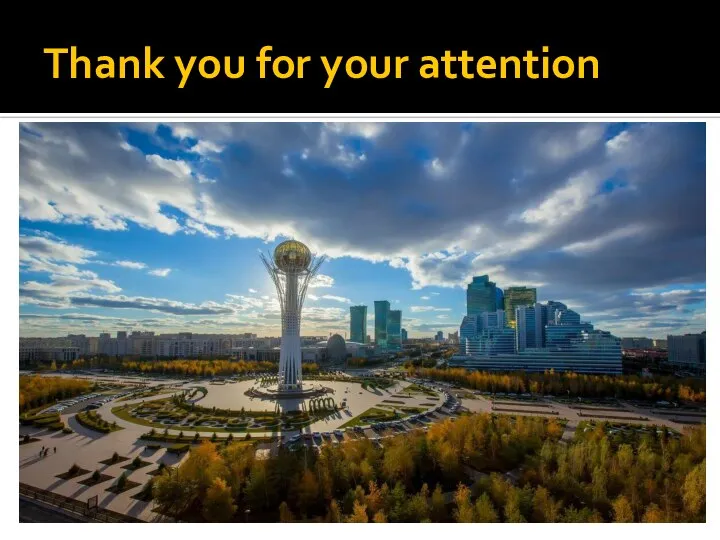
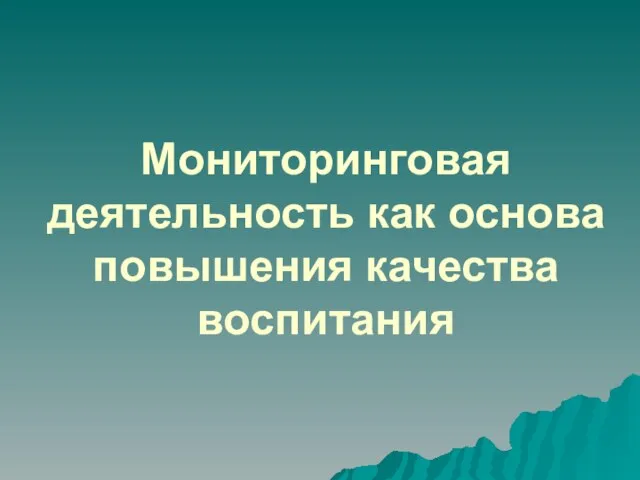 Мониторинговая деятельность как основа повышения качества воспитания
Мониторинговая деятельность как основа повышения качества воспитания 2 Суровые условия проекта Музыкальный центр Жесткие ограничения по внешней памяти Жесткие ограничения по оперативной памяти Част
2 Суровые условия проекта Музыкальный центр Жесткие ограничения по внешней памяти Жесткие ограничения по оперативной памяти Част Баннеры
Баннеры Финансовое мошенничество и риски
Финансовое мошенничество и риски кр КОНСТИТУЦИЯ
кр КОНСТИТУЦИЯ Понятие преступления
Понятие преступления Культура малой Родины
Культура малой Родины Презентация Платона.odp 2
Презентация Платона.odp 2 Обслуживание и ремонт электрооборудования центробежного насоса
Обслуживание и ремонт электрооборудования центробежного насоса Традесканция
Традесканция Продвижение аккаунта в социальных сетях
Продвижение аккаунта в социальных сетях Презентация на тему Почва, ее состав и свойства
Презентация на тему Почва, ее состав и свойства  General Motors
General Motors Новый сотрудник. Шаблон
Новый сотрудник. Шаблон ВОСПИТАТЕЛЯ ДЕТСКОГО САДА
ВОСПИТАТЕЛЯ ДЕТСКОГО САДА Презентация на тему Гробница Тутанхамона
Презентация на тему Гробница Тутанхамона  Методология Менеджмента, Контроля и Сопровождения Информационных Cистем
Методология Менеджмента, Контроля и Сопровождения Информационных Cистем Презентация на тему Путешествие по странам мира
Презентация на тему Путешествие по странам мира Плюсы и минусы интернета
Плюсы и минусы интернета Основы современного общевойскового боя
Основы современного общевойскового боя MU6100_TrainingManual_170201
MU6100_TrainingManual_170201 «Веселый треугольник»
«Веселый треугольник» Развитие зрительной памяти и коррекция ее недостатков у дошкольников и младших школьников
Развитие зрительной памяти и коррекция ее недостатков у дошкольников и младших школьников Верхняя и нижняя подачи
Верхняя и нижняя подачи 第三集装箱款式图片
第三集装箱款式图片 Сравнительная оценка результатов испытаний «Растворение» и «Распадаемость»
Сравнительная оценка результатов испытаний «Растворение» и «Распадаемость» Теория майорановского фермиона
Теория майорановского фермиона Семинар: «Заполнение электронного журнала в АСИОУ v 7.0»
Семинар: «Заполнение электронного журнала в АСИОУ v 7.0»